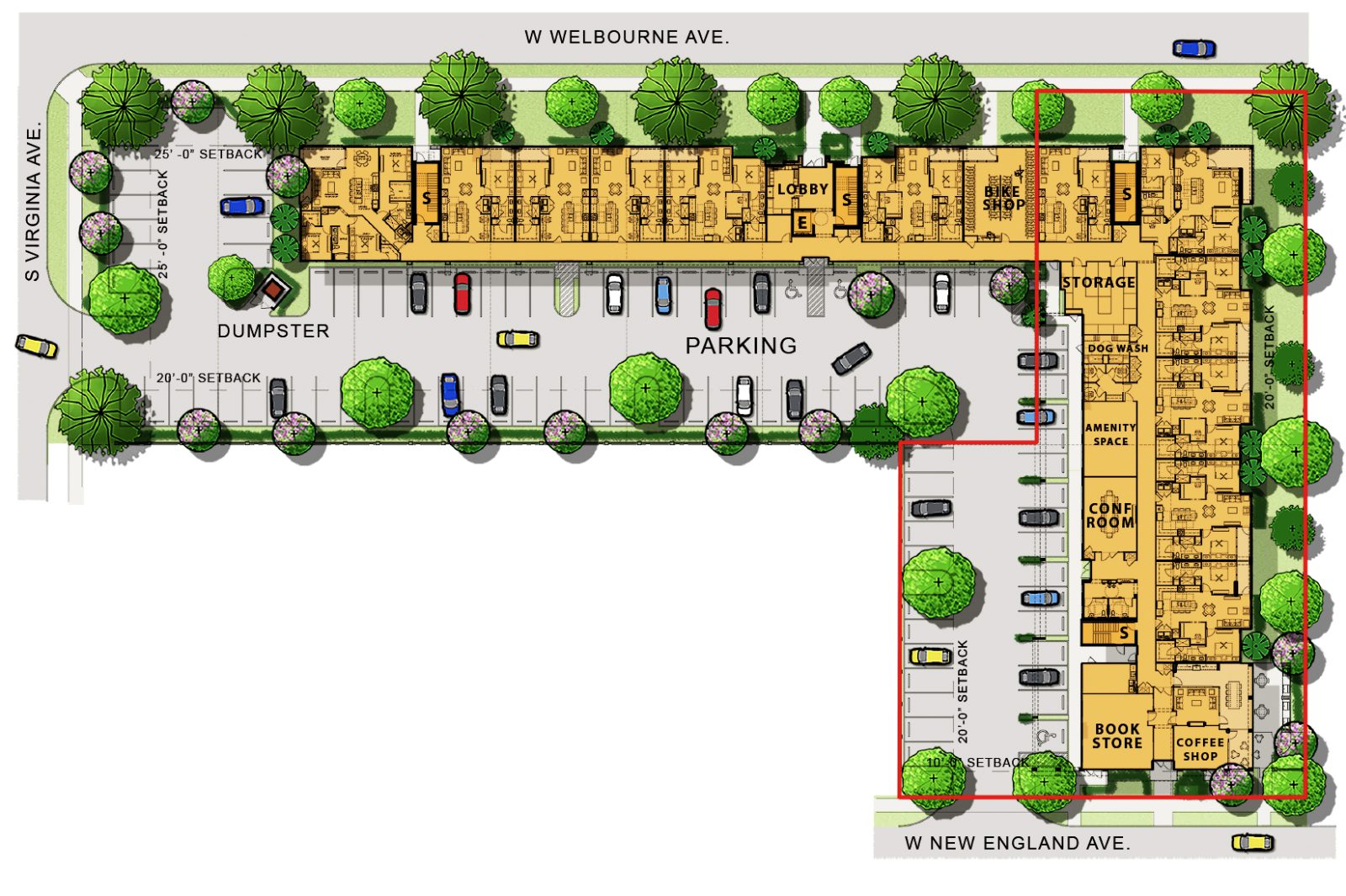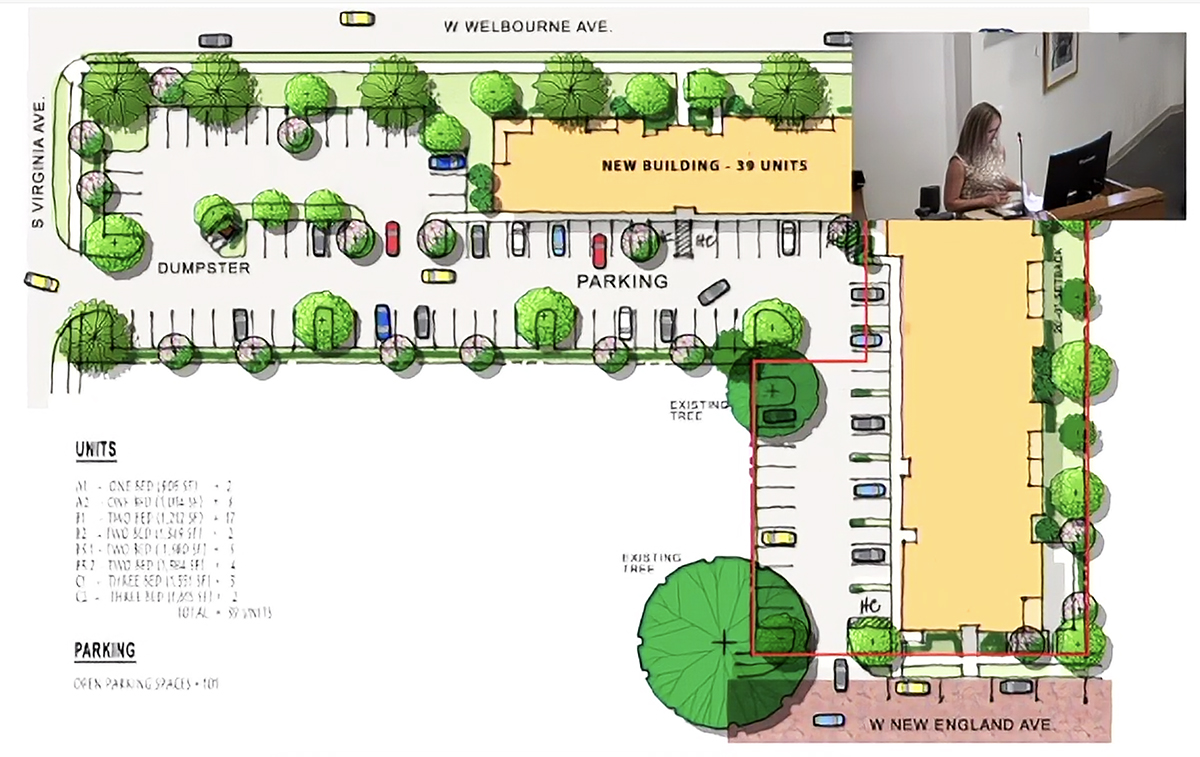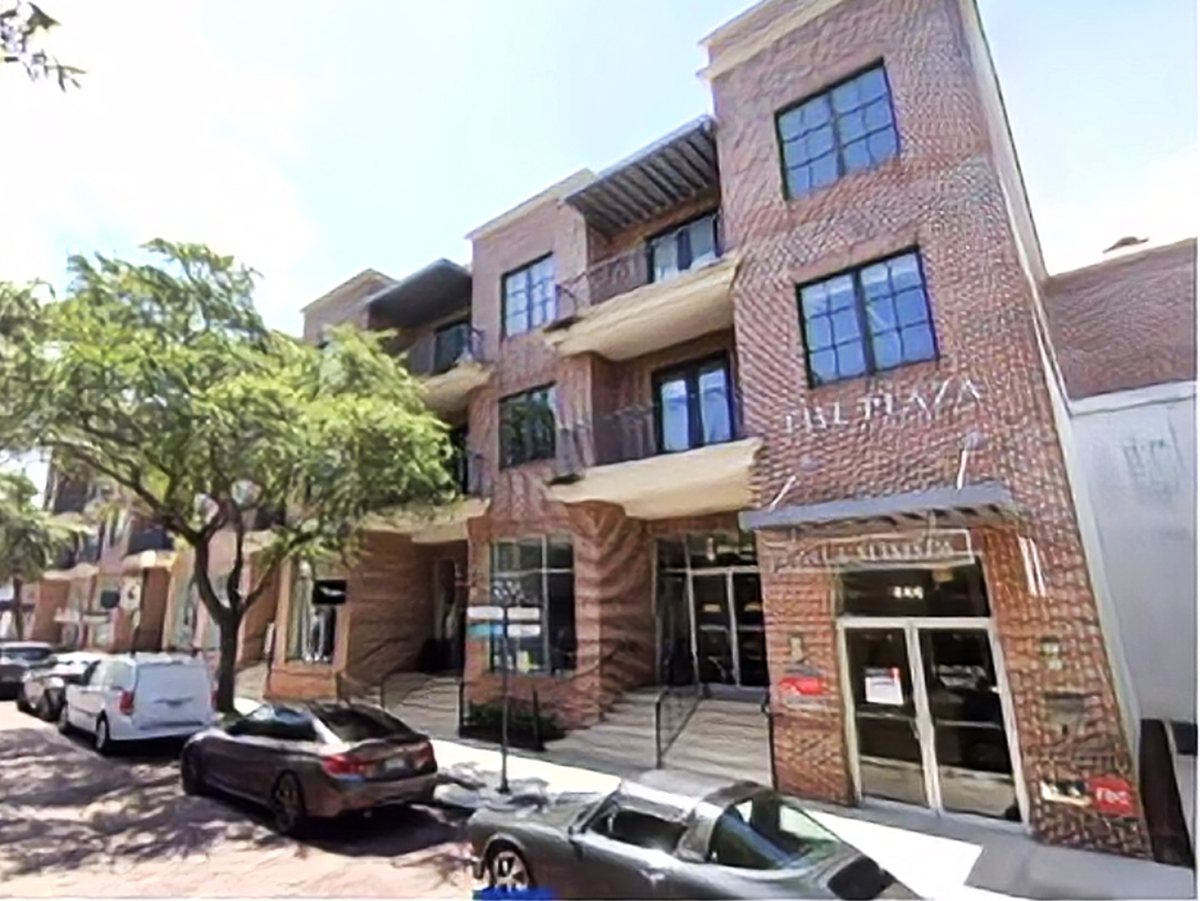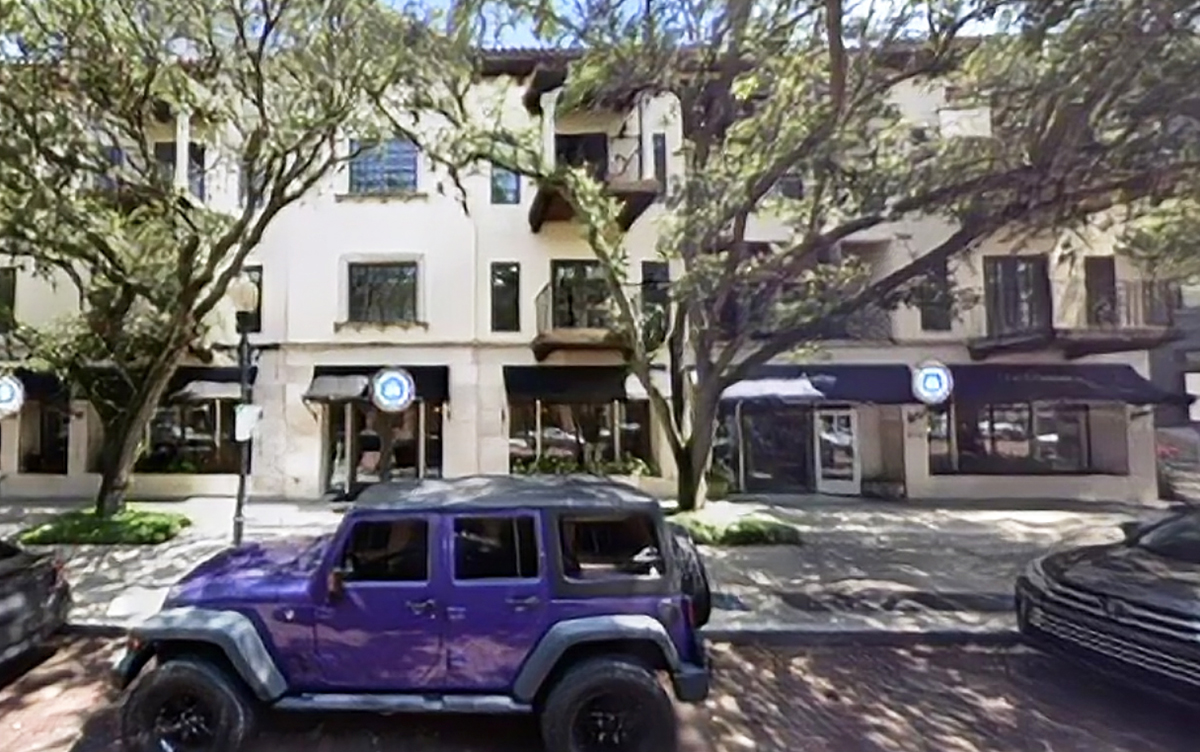The latest hearing on the Rollins College workforce housing proposal began with a surprising announcement and ended with a vote to table the matter.
The College had been seeking amendments to the city’s Comprehensive Plan and Zoning Code to build an 80,981-square-foot, 48-unit apartment building on separate college-owned lots along W. New England, W. Welbourne, and S. Virginia avenues. The amendments would allow for a three-story building design and a higher density than the 17 units per acre permitted under R-3 zoning.
The first public discussion, held at the Jan. 17 Planning and Zoning Board meeting, included concerns from residents of the neighboring Douglas Grand condominium building over density, parking, and architectural continuity. The proposal cleared with a 4-2 vote to recommend to City Commission with conditions for a community benefit agreement and a parking management plan.
While introducing the first reading of the proposal into the Jan. 24 City Commission meeting, Rollins College President Grant Cornwell cited recent changes that included a 20% reduction in building size. “This is a gesture on our part to decrease the project from 48 units to 39 units,” he said. “That will decrease density – increase parking – and I ask for your support.”


Attorney Becky Wilson, speaking on behalf of Rollins and building designers, Slocum Platts Architects, presented the updated plans with the explanation that revisions were finished that afternoon and not included in the meeting agenda packet. The new site plan shows a reduced building length along W. Welbourne Avenue and additional parking spaces that increase the total number to 101.
Wilson added that Rollins would be willing to offer five feet of its property space along the Welbourne Avenue side if the city wished to widen the street with indented parking. She concluded with a request that Zoning Code and Comp. Plan amendments be approved that evening with conditional use approval held until an itemized list of agreements can be presented at the proposal’s second reading.
The concessions caught commissioners and neighbors offering public comments off-guard, but concerns were still raised over the building’s design and height.

Under the Comprehensive Plan and Zoning Code, the side of the property fronting New England Avenue is allowed a three-story building height with the section fronting Welbourne Avenue only permitted 2.5 stories with a pitched-roof design. The proposed three-story design would be an extension of the same allowance in the city’s nearby central business district, but Wilson argued that pitched-roofs would not create a sufficient third-floor living space. “In this instance, they are actual units that families will live in,” she said. “It isn’t conceivable to make them live in this sloped attic sort-of space.”
Concerns over the property’s ad valorem status were raised when Wilson stated that exemption would be sought under the state’s nonprofit educational allowance. Commissioner Todd Weaver questioned the inclusion of a tax-exempt property within the CRA, suggesting that an existing 1,000 square feet of commercial space – included as part of a Comprehensive Plan policy mandating street-level businesses along New England Avenue – be increased to 2,000 square feet that can be subject to ad valorem taxes.
“Without that tax base, asking for extraordinary changes to Comp. Plan and (Zoning) Codes doesn’t define what the CRA was meant for,” Weaver said.
Additional concerns over conveying the property’s “non-conforming use” status and the length of time that the apartment agreement would remain in effect were brought up by Commissioners Kris Cruzada and Marty Sullivan, respectively.
The “non-conforming use” stems from the existing Dan Hunter Apartments, currently used by students of Rollins’ Crummer Graduate School of Business. The 74-year-old building exceeds the maximum units per acre on its section of the property, and the new proposal takes advantage of that status. Cruzada pointed out that standards of a special permit outlining the conditions of the conveyance have not been part of the approval process to date. “I’d prefer to have it (in order) to confirm the Comp. Plan amendment,” he said. “Just so we have something on the record.”
Sullivan requested that a guarantee by Rollins to maintain housing for faculty and student-facing staff be extended from 20 years to 30 years. “Given the magnitude of this project, I believe it is in the best interest of the city to have it maintained at least 30 years in the future,” he said. Sullivan also requested clarification of the term “student-facing staff” as a means of determining who would be allowed to reside at the property.


Mayor Phil Anderson admitted that project density adjustments eased his own concerns over the compatibility of the building’s frame construction with neighboring architecture. However, he stated a desire to pursue the look of a more “naturally occurring urban block” and remained unsure about the three-story section along Welbourne Avenue.
“I believe that, tonight, Rollins made a big step towards compromise with the city, with the neighbors, and with this commission,” said Wilson as she reiterated her previous request for a vote on the Comp. Plan and Zoning Code changes. “I just don’t know what we would do to make this look any better.”
Anderson advised that his vote, if required that evening, would not be in favor of the amendments as they were stated. “I’m not prepared to approve the policy change vesting the three-story roof on Welbourne without seeing alternative architecture,” he said. “We’d be folding Welbourne into the central business district – and I’m not going to vote to do that.”
A motion to table, made by Vice Mayor Sheila DeCiccio, was passed unanimously. The next opportunity for Rollins to present an amended plan will happen at the next commission meeting, scheduled for Wednesday, Feb. 14.



